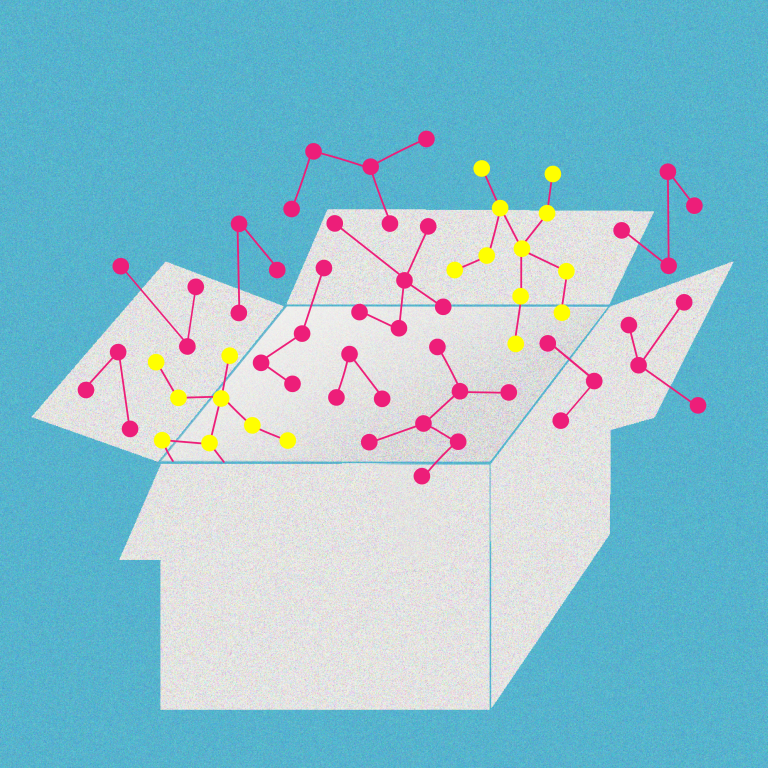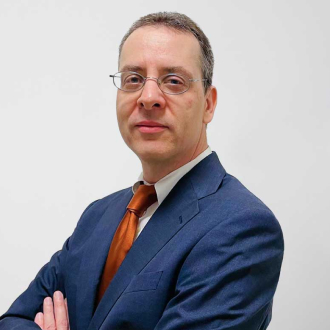The world’s most pressing challenges don’t fit neatly into academic departments. Climate change intersects biology, engineering, economics, and policy. AI development requires technical knowledge alongside ethics, psychology, and cultural understanding, among many other fields. Yet our institutions (universities, research centers, funding bodies) remain largely organized around disciplinary boundaries established centuries ago. In this sense, the 2025 Symposium on Design and Science at Chiba Tech was far more than a typical academic conference. It was a timely exploration into how a humanist institution can adapt to the complexities of our age.
Hosted by university leadership and founding faculty members, this gathering celebrated the launch of Japan’s first anti-disciplinary graduate school. As Chiba Tech President Joi Ito explained, the school will create spaces for people who “don’t fit in any existing discipline either because they are between or simply beyond traditional disciplines.” The symposium itself became a living example of this philosophy, bringing together space lawyers, ethicists, entrepreneurs, and government officials, demonstrating how diverse perspectives can generate insights that no single field could produce alone. Participants embodied ways of working beyond conventional boundaries, from Christine Sun Kim’s award-winning work redefining communication systems to Bhutan’s innovative Gelephu Special Administrative Region.
Christine Sun Kim received the inaugural Radical Transformation Award
The Symposium on Design and Science opened with the announcement of Henkaku Center’s Radical Transformation Award that celebrates those who have brought about a positive societal shift through radical and elegant action. The award includes a 10 million yen prize, generously funded by Reid Hoffman, Honorary Doctor of Chiba Institute of Technology.
Artist Christine Sun Kim received the inaugural Radical Transformation Award in honor of her boundary-defying work exploring how sound operates in culture and society. Following the award, she delivered the symposium’s keynote, illuminating how individual adaptation can evolve into systemic change.
Christine shared her fascinating work that questions fundamental assumptions about how we communicate and challenges society to redesign communication systems with the goal of making the world more accessible. Starting with personal technology adaptations—from TTY phones to smartphones—she demonstrated how access technologies evolved alongside her artistic practice. However, her work transcends individual accommodation, challenging fundamental assumptions about how institutions operate. Her exploration of “Echo Traps,” for example, visualizes how ideas can become trapped in closed systems, endlessly bouncing without evolution or change.
Christine’s keynote established a reflective and energized tone for the symposium, preparing participants to consider nontraditional approaches to education, research, and governance that prompt systemic change.
Anti-disciplinary in Practice
A panel on building anti-disciplinary organizations explored what this institutional transformation might look like at scale. Featuring internet pioneer Jun Murai, researcher Xiao Xiao, artist Sputniko!, and Keio University’s Professor Jiro Kokuryo, the discussion revealed both the potential and challenges of working across boundaries.
Murai reflected on the early internet’s development as inherently anti-disciplinary, combining communication technology, computer science, and human creativity. “Anti-disciplinary means seeing the diversity of desire, people, creativity,” he explained. “[It’s the] freedom to express diversity of ideas.”
But creating these institutions today faces significant emotional and psychological challenges. Xiao Xiao, drawing from her experience leading cross-cultural initiatives, emphasized how anti-disciplinary work requires “having the courage and having the emotional stability to find your own center, pursue what you want to do and just go with it.” She noted how individuals working across disciplinary boundaries often face uncertainty about their identity and professional belonging.
The panel revealed a key insight: successful anti-disciplinary institutions don’t just bring different fields together, but they also create new ways of being that allow individuals to move fluidly between different modes of thinking and creating.
Mindful Prosperity
The Bhutan partnership exemplified this fluid approach to complex challenges. The Gelephu Mindfulness City project represents one of the most ambitious experiments in jurisdiction design happening anywhere in the world—a special administrative region within Bhutan that aims to harmonize economic development with Buddhist values and environmental stewardship.
As His Majesty’s Special Envoy Jonathan Ta explained, “The purpose of the location makes it useful and strategic. How would it add value to countries that are interested to engage with the neighborhood?” The project adopts Singapore’s common law and Abu Dhabi’s financial regulations while maintaining Bhutan’s constitutional commitment to 60% forest cover and gross national happiness principles.
Bhutan’s long-term collaboration with Chiba Tech on the Gelephu project demonstrates how this philosophy translates into practice. Three Bhutanese students are currently pursuing master’s degrees here at Chiba, working on AI in agriculture and smart water management systems. Meanwhile, a joint satellite project has students in both countries developing satellite technology together, with the payload being integrated and launched from the Chiba Tech side. These aren’t just academic exchanges. They’re experiments in what Secretary Jimmy Tenzin called “building the next sustainable thriving economy rooted in GNH (Gross National Happiness), rooted in the values of environmental conservation.”
Gal Raz, who moved Thimphu following his PhD at MIT to work on the project, captured its broader significance: “Bhutan has a lot to offer in approaching problems that the world actually doesn’t yet have solutions to.” The partnership demonstrates how “mindful prosperity” translates into practice. In other words, they are experiments in sustainable development that could inform global approaches to economic growth. (You can read more about the idea of institutionalizing mindfulness here.)
Legal Innovation for Digital Futures
How do we create legal frameworks for challenges that transcend national boundaries? The digital commons panel brought together space law expert Setsuko Aoki and open source advocate Catharina Maracke to explore this question through the lens of physical and digital commons.
Aoki’s analysis revealed a key principle: “Within the national territory, there is an established principle of non-intervention. So a state can establish a novel, new, and ingenious place… as long as that is not against international law.” This becomes particularly relevant for projects like Gelephu Mindfulness City, where new legal frameworks can be tested within existing sovereignty structures.
Catharina’s open source perspective highlighted how successful digital commons rely on transparency, accessibility, participation, and accountability—principles that could inform new jurisdiction design. The discussion revealed how copyright licenses have successfully created shared digital infrastructure, suggesting models that could be adapted for emerging governance challenges.
The Entrepreneurial Mindset
During the panel “Entrepreneurship in Japan,” innovation cultures across borders became the focus as panelists examined what entrepreneurship means in different contexts. Rather than viewing entrepreneurship as purely about starting companies, the conversation explored it as a fundamentally anti-disciplinary mindset requiring an understanding of technology, markets, culture, policy, and social dynamics.
The discussion revealed how contemporary entrepreneurship increasingly involves navigating complex geopolitical considerations, particularly in emerging technologies. Battushig Myanganbayar, a Mongolian-American entrepreneur who moved from Silicon Valley to Japan to start an AI company, argued for the need for a “geopolitically neutral place” to exist within today’s AI ecosystem. “There’s two dragons, one is red, the other one is blue,” he explained, referring to the US-China divide in AI development. “And I think that Japan is one of the best places to fulfill that role in Asia Pacific.”
Myanganbayar’s decision to move from Silicon Valley to Japan illustrated this global perspective on entrepreneurship, showing how founders must now consider not just technical innovation but also geopolitical positioning. The panel discussed entrepreneurship as less about individual genius and more about systems thinking—the ability to align interests across different stakeholders and navigate interconnected challenges.
Navigating AI’s Global Future
As the main symposium began, a smaller parallel event was taking place in an adjacent room–the Henkaku Center’s first AI Safety Workshop, co-hosted by Japan’s Artificial Intelligence Safety Institute (AISI). This gathering represented a meaningful milestone as Japan AISI’s first major international convening on AI governance, embodying the anti-disciplinary vision by assembling policymakers alongside computer scientists, business leaders with civil society advocates, and academics from multiple fields.
The workshop was designed to allow participants to engage with AI safety as the complex, multifaceted challenge it truly represents, breaking out of their individual disciplinary silos. Rather than treating this as a one-off event, the plan is to develop this into an ongoing workshop series, nurturing a sustained community of practitioners and researchers who can continue advancing these crucial conversations in AI safety and governance.
After the workshop concluded (which we’ll cover separately in another blog post), some of the participants joined the main symposium as panelists, creating a seamless transition from technical discussions to public dialogue. The AI safety panel featured perspectives from the US, South Korea, Singapore, and Japan, examining how we might develop artificial intelligence that truly serves humanity.
The conversation highlighted interesting cultural differences in Japan’s approach to AI development. As Merve Hickok, president of the Center for AI and Digital Policy in Washington, DC, observed from her year in Japan as a visiting scholar at the Chiba Tech Henkaku Center, “The underlying assumption or the underlying view of AI or any other technology in Japanese culture is that it’s neutral and there can be coexistence, like harmonious coexistence.” This perspective suggests that Japan might offer valuable insights for global AI governance—approaches that emphasize cooperation and mutual benefit rather than competition and control.
The Human Element
As the symposium unfolded, the founding mission of the graduate school became increasingly clear. What made the event truly meaningful was its fundamentally human character. This gathering sought to develop new sensibilities for engaging with complexity, creating platforms that demonstrate alternative approaches to knowledge production and institutional design, but always with recognition that institutions are ultimately about people.
Christine’s call for institutions that support whole people, not just their professional identities, set the tone. The Bhutanese delegation’s emphasis on happiness and environmental stewardship alongside economic development reinforced it. The AI safety panel’s focus on human flourishing rather than purely technical metrics continued this thread. This human-centered approach distinguishes the anti-disciplinary vision from simple interdisciplinary collaboration. In other words, it’s not just about bringing different fields together, but about creating spaces where people can bring their full selves to address challenges that matter deeply to them and to the world.
Building Forward
This symposium marked the beginning rather than the conclusion of a longer-term project. The Graduate School of Design and Science, launching in April 2026, will provide ongoing structure for anti-disciplinary education and research. With faculty drawn from art, engineering, policy, and business, the school will admit students interested in working on problems that don’t fit existing academic categories.
The Bhutan partnership will deepen with additional student exchanges, joint research projects, and policy collaborations. The AI safety workshops will continue on a regular basis, building a community of researchers and practitioners working on responsible AI development. And the symposium itself will become an annual gathering for those interested in institutional innovation.
Perhaps most importantly, the connections made during this single day will continue generating collaborations we can’t yet imagine. As President Joi Ito emphasized in closing, the goal is to “change ourselves and the way we do things to change the world.” Rather than trying to design other people’s systems, “we will redesign our way of thinking and working and impact the world by impacting ourselves.”
As we face an era of increasing complexity and interconnection, this may be exactly the kind of institutional innovation we need—not just new ways of organizing knowledge, but new ways of being human in relationship with technology, nature, and each other. The 2025 Symposium on Design and Science offered a glimpse of what that future might look like, and an invitation to help build it.
Joseph Park is a researcher at DAL (joseph@dalab.xyz)
Illustration: Soryung Seo
Edits: Janine Liberty





